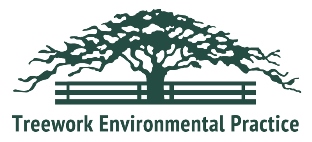Tree Morphology
Principles & application of tree morphology for diagnostics & management
Venue: Ashton Court, Bristol
Date: 23rd & 24th March 2006
This two-day seminar is an in-depth exploration of tree morphology intended to introduce and develop understanding in an arboricultural specialism mainly developed and used on the Continent. Tree morphology seeks to identify and apply architectural rules inherently coded in the tree.
One of the implications of this view is that the physiological and environmental history of the tree is somehow recorded in its form, if this could be properly ‘read’ and interpreted. While it is an increasingly sophisticated discipline in modern arboriculture, it builds on some of some very early arboricultural observations that can be found in Leonardo da Vinci’s notes on tree architecture and later in Wolfgang Goethe's observations of form and function in plants.
Speakers
Pierre Raimbault, Professeur, Institut National de Recherches Agronomiques d'Angers, France
Use of tree architecture as a basis for tree assessment: the principles and main applications:
Pierre Raimbault, one of the main proponents of tree morphology, has presented a model which views the tree in terms of standard morphological developmental stages, that if correctly observed, may be used to diagnose perturbations in physiology. The model is used to understand the ageing process, physiological stress and as a diagnostic technique to determine tree management options.
Dr Milena Martenkov, Dep. Tree Eco Physiology, Mendels University, Czech Republic
Interdisciplinary approaches to understanding branch & root architecture:
Dr Milena Martenkova contributes to experimental investigation in multi-disciplinary approaches. Her work focuses on branch architecture and root morphology through the investigation of branch and root architecture
Dr David Lonsdale, UK
Tree morphology & implications for tree assessment & management:
Dr David Lonsdale will investigate how tree morphology has become internalised in tree assessment & inspection methodologies; how this draws on understandings of twig architecture and is used to recognise a tree’s “life stage” or condition of impaired vitality. He will examine decay as a morphological process in ancient trees and trends in arboriculture that focus on a morphological approach to recognition of bio-mechanical features to establish notions of ‘defects’ employing visual comparison with a perceived species ‘norm’. He will also explore how morphological factors may be taken into account when assessing tree condition, including intra-specific differences & effects of soils & climate.
